Jane Harris
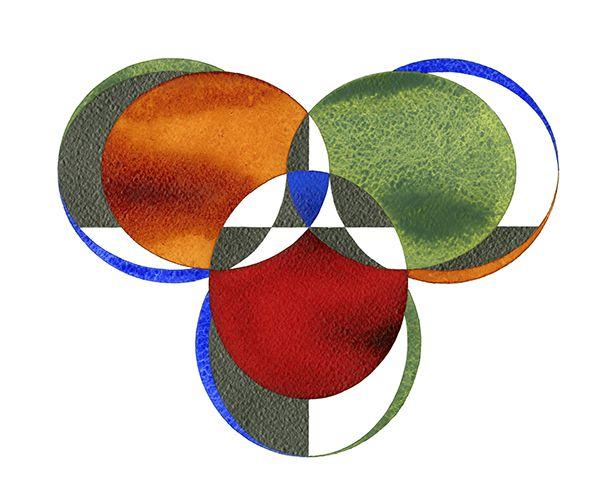
An interview with Jane Harris about Pas de Trois (2016), a commission from the Frac Aquitaine, Frac-Artothèque du Limousin and the Frac Poitou-Charentes.
Public presentation of the work on 5 and 6 November 2016 to mark the first weekend of the FRACs at the Frac Aquitaine (Bordeaux), the Frac-Arthothèque du Limousin (Limoges) and the Frac Poitou-Charentes (Angoulême).
“The 23 FRACs of France opened their doors on 5 and 6 November 2016 for the weekend of the FRACs. This event offered an opportunity in Nouvelle-Aquitaine to promote the cooperative projects undertaken between the three organizations. Among them was the work of the artist Jane Harris, invited to produce “a work inspired by the birth of the region, with the status of an emblem or coat of arms”. This latter represented a harmonious synthesis between the personal work of the artist, of British origin and living in the Dordogne, and an overall reflection about the developing identity of this major region”. Source: www.nouvelle-aquitaine.fr

installée à l'intérieur du Frac Aquitaine à Bordeaux
© Frac Aquitaine
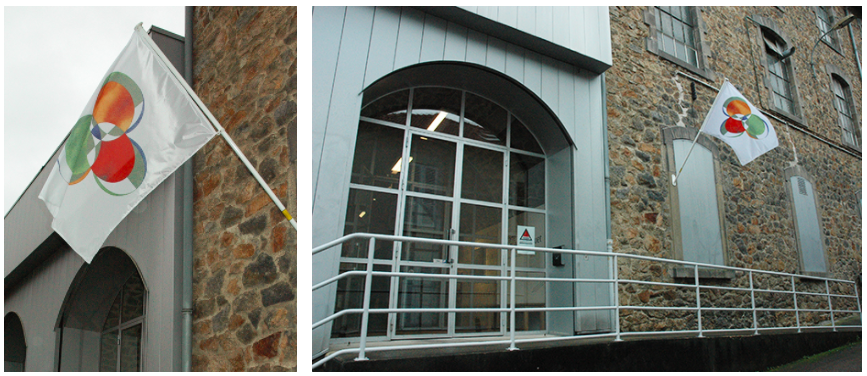
installée sur la façade du Frac-Artothèque du Limousin à Limoges
© Frac-Artothèque Limousin
Elodie Goux : How did this collaboration with the three FRACs start?
Jane Harris : In March 2016, Claire Jacquet, the director of the FRAC Aquitaine, and Luc Trias, in charge of the Creative Industries department at the Aquitaine Regional Council, proposed that, as a professional artist living in Aquitaine, I should join the advisory committee set up to choose the name of the new region. I was surprised but very honoured to be invited.
My participation in that committee, the presence of five of my paintings in the FRAC Aquitaine and Limousin collections, the installation of my studio in the Dordogne, a département which, geographically speaking, has a central place in Nouvelle-Aquitaine, plus an international* dissemination of my work are four reasons which probably prompted the directors of the three FRACs to turn to me.
Needless to add, I hope that it was also because they thought that my work would translate well in the form of a flag!
E. G. : What has this commission meant for you, as an artist working in Nouvelle-Aquitaine ?
J. H. : It seemed important to me to celebrate this merger of the three regions at the level of contemporary art and its dissemination as carried out by these three regional organizations. I wanted to underscore their respective distinctive features while at the same time showing the links existing between them. The choice of the title was decisive, at once literal and playful, neatly lending a sacred character to this brief to disseminate contemporary art shared by the sponsors making the commission.
E. G. : You responded to this commission using the watercolour technique that you have been developing a lot since 2011. Can you explain this choice ?
J. H. : In fact, after a first residency at the Josef and Anni Albers Foundation in the United States, I developed my watercolour work on a more regular basis. While I decided to work solely on paper, the possibility of combining areas of pencil and areas of watercolour in the same work struck me as interesting. That enabled me to give a new and quite unexpected direction to my work on paper, revealing more complex and ambiguous spatial relations within each work.
Without being a logo, Pas de Trois symbolizes the way the three FRACs have been drawn together. This silk-screened watercolour on an object, which is in fact a flag, is well-suited to this kind of reproduction. What’s more, it was also a matter of giving perspective to research which had already been exercising me for some time , and as such it was a precise moment in the development of my praxis.
E. G. : With regard to your research, we should mention here the recurrence of the figure of the ellipse which is being constantly renewed in your work, whether it’s your production of drawings, paintings, or watercolours. Could you go back over this aspect of your work and they way it’s been transcribed for this commission ?
J. H. : I’ve been using the figure of the ellipse in my work for nearly 30 years. It’s a geometric figure which doesn’t have a single centre, but two focal points. So it contains a potential for infinite permutation. It can also be simultaneously taken as a flat form on the surface of the picture, or else as a perspectival circle, creating the illusion of depth in the painting or drawing. It’s a figure which I find very elegant, at once restful and dynamic. Its use for this commission enabled me to play with the ambiguities of those two states, between surface and depth.
E. G. : How did you prepare this very graphic project ?
J. H. : First I gave myself carte blanche in order to explore very different possibilities. To do that, I produced small series based on the existence of the three regions, and their merger, created by liaisons and overlaps which meant they could also hang on to their own identity. Although the study is designed to become a motif for a flag, it was important for me that it keep the structural complexity and the spatial ambiguity that are a feature of all my works. For me this was a real challenge.
E. G. : How did you go about determining the colours of this emblem?
J. H. : As with my latest works on paper, I decided to combine graphite and watercolour, and use the whiteness of the paper to have a complete range of tones and colours.
As my research progressed, I gradually refined my choices; using mixtures, I managed to define three colours which I reckoned resonated with the identity of each of the regions. Red is associated with Aquitaine and its wine production, coppery orange with Poitou-Charentes, calling to mind the hue of Cognac, and green with the Limousin region with its great expanses of forests and fields. The addition of ultramarine blue corresponds with the bonding agent, water, which is important for the three regions, be it the ocean shore or the river system running through them.
E. G. : In 2013, you worked on a tapestry at the Cité international de la Tapisserie d’Aubusson in what used to be the Limousin, and there too you had to confront your visual research with a very different medium to those you usually use. How did those experiments contribute to your work ?
J. H. : To make the tapestry at Aubusson, I also undertook lots of studies before producing the cartoon. Its production, which calls for great expertise, was put in the hands of a professional loom setter with whom I had chosen the threads beforehand, their size, the colour combinations, and the geometry of the design.
That experience was very useful for the process of making the flag. Proceeding by way of studies and maquettes, talking things over with professional people who respond to constraints which are not mine, and all this to achieve a result that also tallies with my visual expectations….what was involved was getting away from the comfort of my own praxis and my studio, and accepting that I couldn’t be in control of everything.
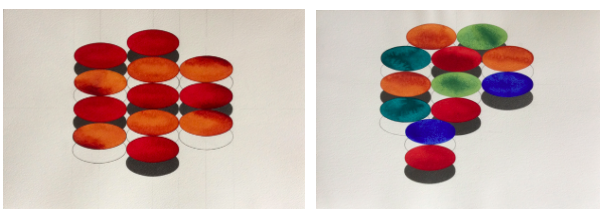
watercolors on paper / 105 x 88 cm
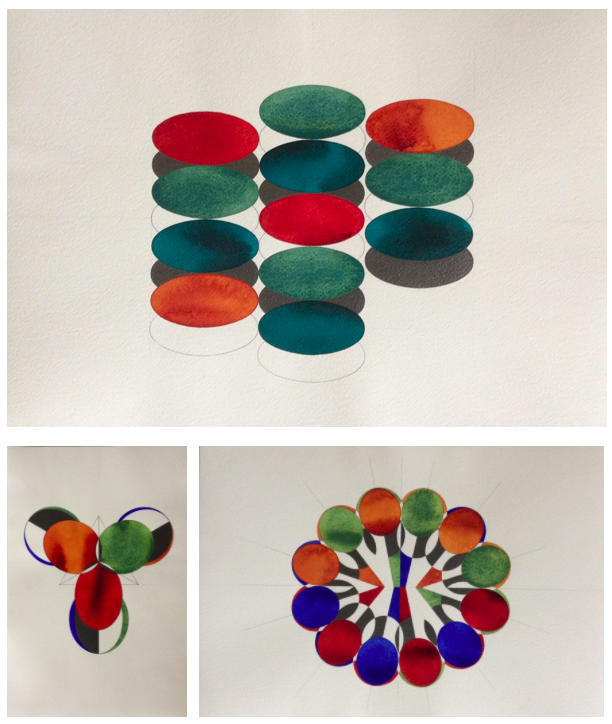
watercolors on paper / 105 x 88 cm
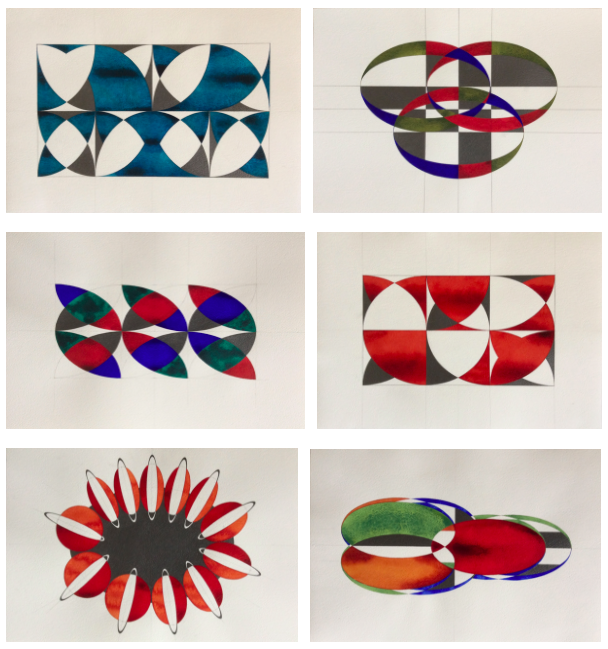
watercolors on paper / 105 x 88 cm